Code lines per file, methods per class, cyclomatic complexity and so on. Developers resist and workaround most if not all of them! There is a good Joel article on it (no time to find it now).
What code metric(s) you recommend for use to automatically identify "crappy code"?
What can convince most (you can't convince all of us to some crappy metric! :O) ) of developers that this code is "crap".
Only metrics that can be automatically measured counts!
